Choosing Edmund Optics filters for helium, oxygen and argon narrowband imaging
Doing narrowband images in helium, neutral oxygen or even argon bands requires some narrowband filters that aren't (yet?) made by astro-filters makers. The problem may be solved by machine vision / scientific lab filters. More narrower and better they get the more they will cost - even more than astronomical filters. Semi-narrow filters may be found cheaply (Omega Optical on Ebay for He-I and He-II). 10 nm narrow filters are also available through Edmund Optics - and I've chosen 4 EO filters for experimental narrowband imaging.
I've ordered 4 EO filters through gerdneumann.net which also mounted them in Astronomik filter cells (double cells as filters are thick) with narrow collars as the filters are only 25 mm in diameter.
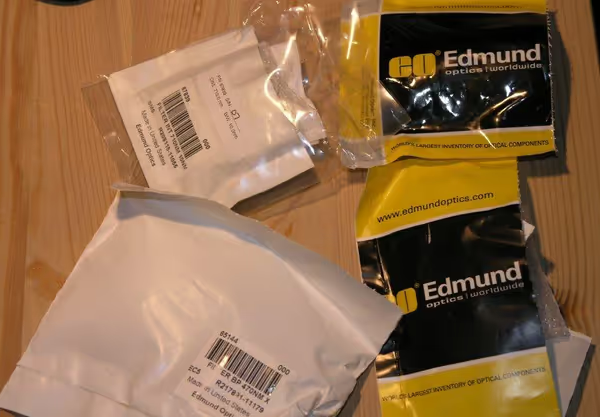
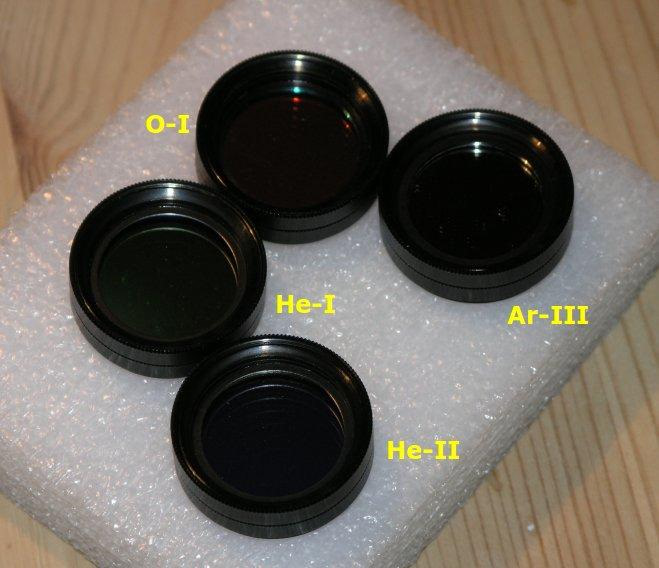
He-II
He-II band can be found in some planetary nebulas. He-II emission will show areas of highest ionisation - closest to stars that ionised the gas. This band is centred at 468,6 nm. EO has a TechSpec 470nm filter that can be used for this band: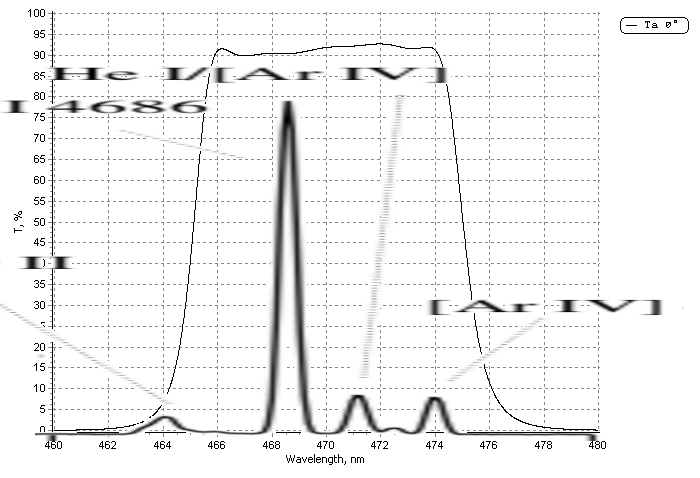
He-I
This emission line can be found in some H II regions. M42 in Orion or NGC6888 have quite strong He-I emission in areas of highest ionisation. The band is centred at 587,6 nm. It's in the middle of high pressure sodium lamps emission, but luckily it's just before self absorbed D band of those lamps so light polution of that type should be destructive that much. EO has a TechSpec 589nm filter, but no detailed specs, so this is a interpolation from a filter centred on other band: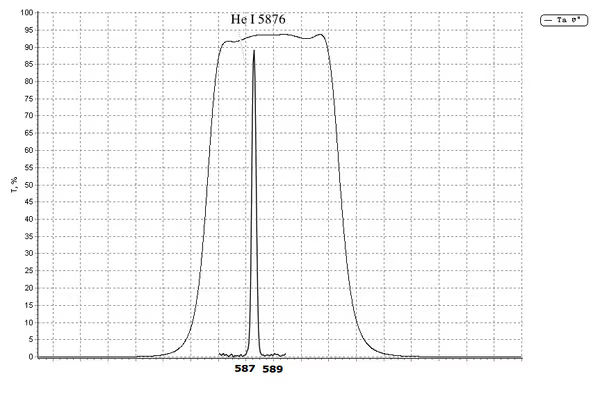
[O I]
[O I] is not O-III. It's centred at 630 nm and will show locations of neutral gas - outside ionised gas. In M27 it will show neutral gas condensations inside the nebula (quite unique). EO has a TechSpec 632nm filter for this band. This filter except of main O-I band should catch weaker emission at 636,3 nm and S-III (not S-II that we use) 631,2 nm if it exists in given nebula.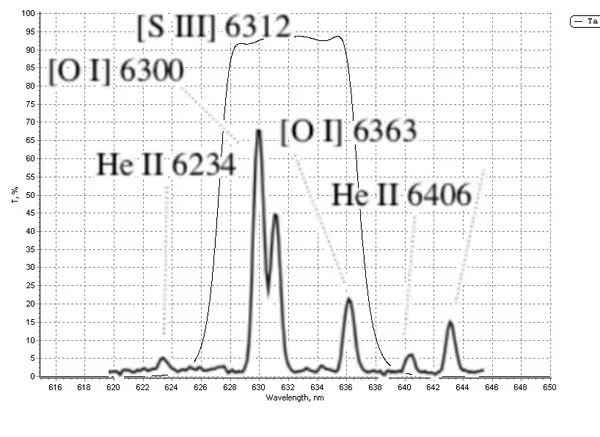
[Ar III]
[Ar III] is located at 713,5 nm, in infrared after the S-II doublet. It can have quite decent intensity in some cases, but lower QE of cameras will limit usefulness of this band. From all bands described here this one is the weakest. Not much data is available about Ar-III but for example Crab Nebula has some unique [Ar III] features. EO has one filter - TechSpec 710 nm, but it has only ~55% transmission. There is no detailed specs, so I had to interpolate from a 730 nm filter specs: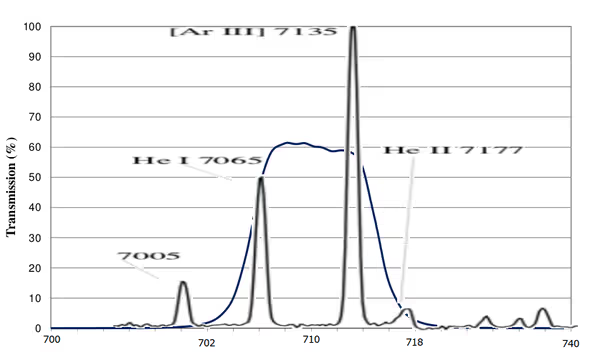
Results
Exotic narrowband seems to work best for planetary nebulae or similar supernovae nebulae (Crab Nebula). For H II region nebulae the emission is to much diffused.
It also prefers bigger apertures providing more photons and bit better resolution than average small APO scope.
[O I] may give most interesting image (if the emission exists), while helium will be more "boring" diffused blob near the central star. [Ar III] seems to be to weak to produce usable and nice images (except maybe M1 and similar objects... to be tested).
- M27 - H-alpha and [O I]
- M16 - H-alpha and [O I]
- M42 - [O III], [Ar III], green continuum
- M42 - [S II], [He I]
- M42 - [O I] and wide-band CLS-CCD
- NGC 7009 - [He II] and other
- M27 - [He II], [Ar III] and others
- M57 - [He II], [Ar III] and others
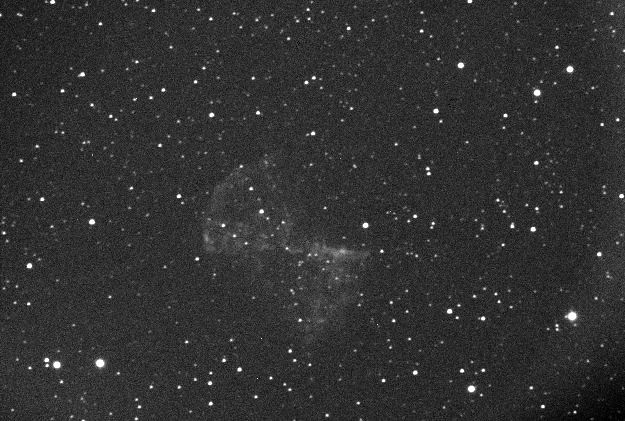
Quick [O I] test on M27
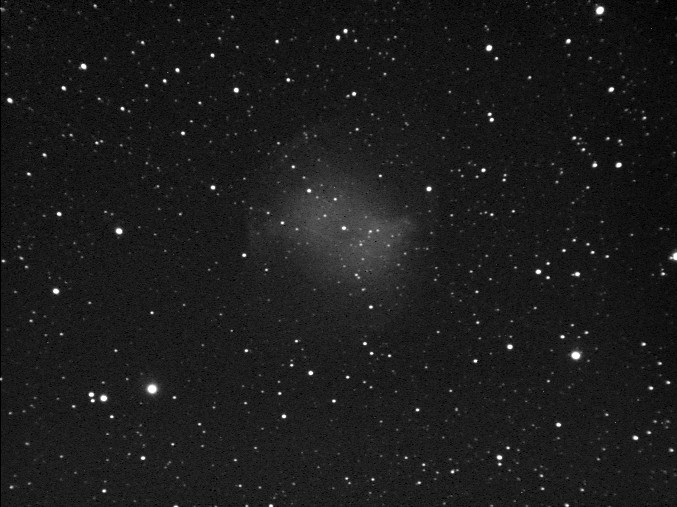
M27 in He II band
Comment article